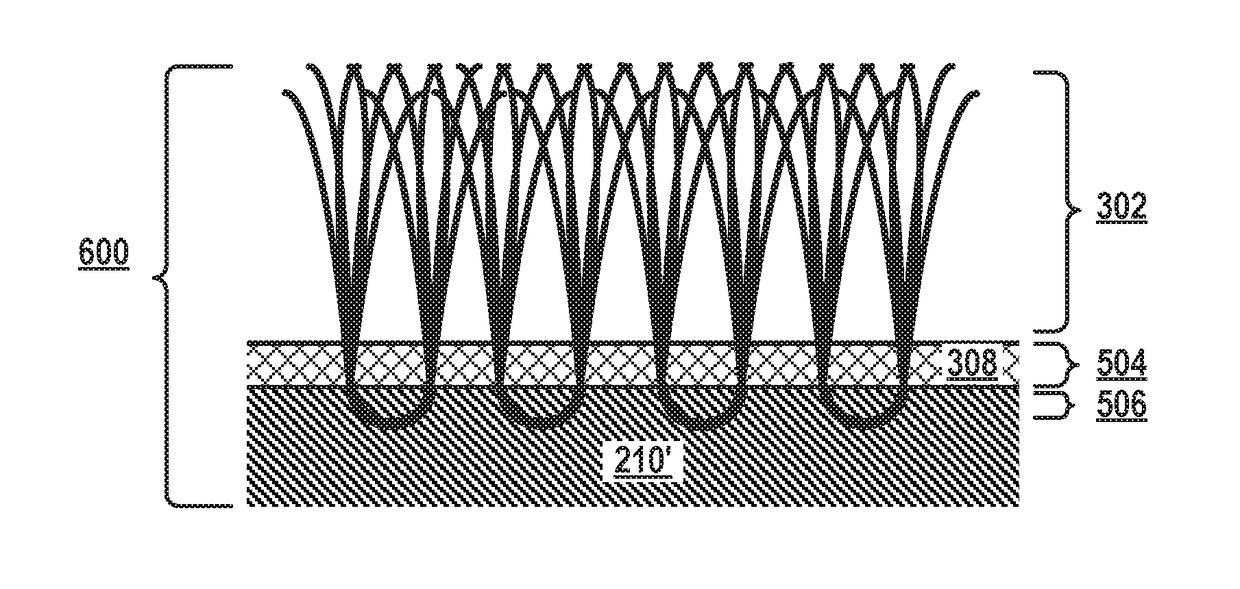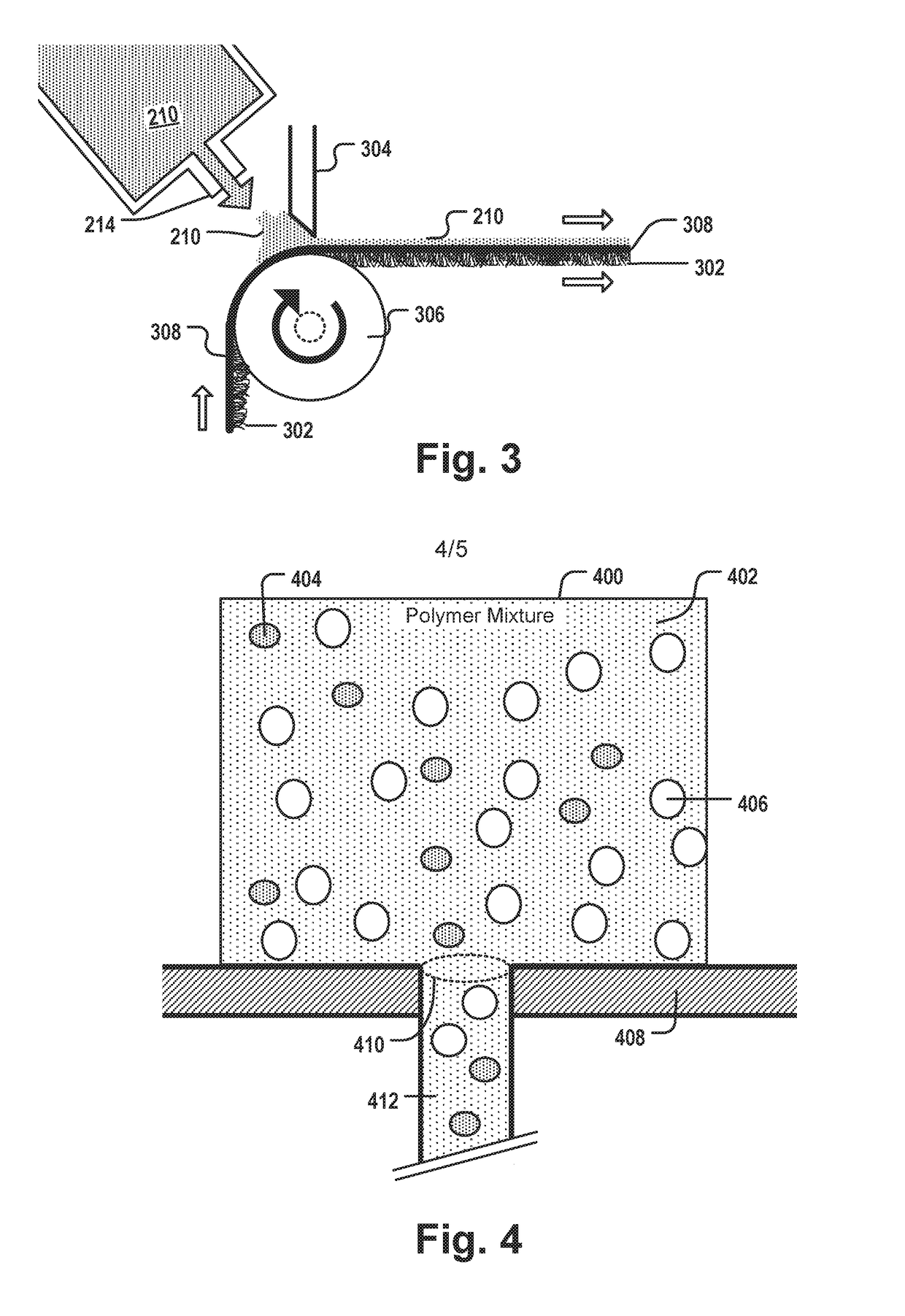Using a polyol mixture comprising pbd for creating a pu-based artificial turf
a technology of polyol mixture and artificial turf, which is applied in the direction of pavements, applications, roads, etc., can solve the problems of weak van-der-waals forces between the fibers and the pu backing, the damage of the mechanical fixing of the fibers in the pu backing, and the damage of the mechanical fixing of the fibers
- Summary
- Abstract
- Description
- Claims
- Application Information
AI Technical Summary
Benefits of technology
Problems solved by technology
Method used
Image
Examples
Embodiment Construction
[0077]Like numbered elements in these figures are either equivalent elements or perform the same function. Elements which have been discussed previously will not necessarily be discussed in later figures if the function is equivalent.
[0078]FIG. 1 shows a flow chart of a method of manufacturing a PU-based artificial turf backing 602 as shown, for example, in FIG. 6. In a first step 102, a fluid polyurethane mass 210 is created as depicted, for example, in FIG. 2. The creation of the liquid PU mass comprises reacting first and second polyols with an isocyanate. The first polyol is a polyether polyol or a polyester polyol or a mixture thereof, and the second polyol is polybutadiendiol. The polyether and / or polyester polyol have two hydroxyl groups per molecule.
[0079]Polyether polyols are made by reacting epoxides like ethylene oxide or propylene oxide with the multifunctional initiator in the presence of a catalyst, often a strong base such as potassium hydroxide or a double metal cyan...
PUM
| Property | Measurement | Unit |
|---|---|---|
| density | aaaaa | aaaaa |
| temperature | aaaaa | aaaaa |
| hydroxyl value | aaaaa | aaaaa |
Abstract
Description
Claims
Application Information
 Login to View More
Login to View More - R&D
- Intellectual Property
- Life Sciences
- Materials
- Tech Scout
- Unparalleled Data Quality
- Higher Quality Content
- 60% Fewer Hallucinations
Browse by: Latest US Patents, China's latest patents, Technical Efficacy Thesaurus, Application Domain, Technology Topic, Popular Technical Reports.
© 2025 PatSnap. All rights reserved.Legal|Privacy policy|Modern Slavery Act Transparency Statement|Sitemap|About US| Contact US: help@patsnap.com



